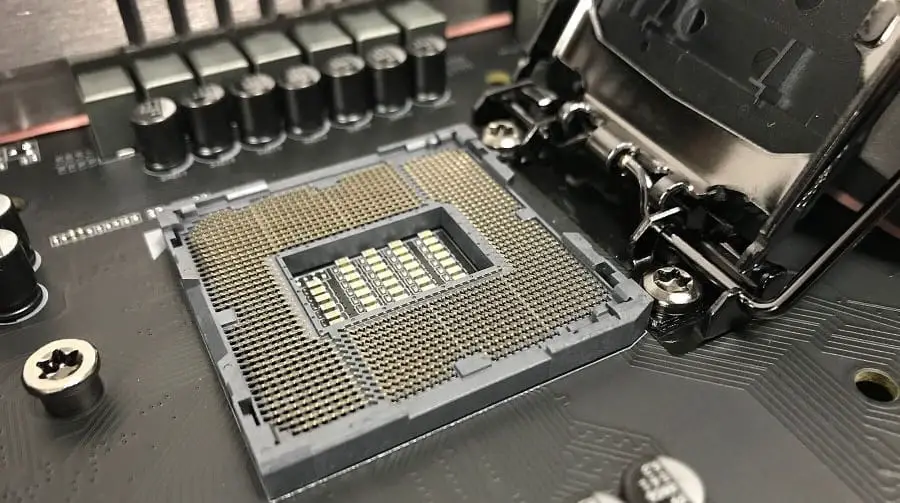You can also be interested in these:
- Comparison of the Z790 and Z690 Intel motherboard chipsets
- Who leads the battle of the CPUs in 2023?
- Intel B760 vs B660 chipset: Features and differences
- Which Intel CPU works best with liquid cooling?
Intel is making arduous efforts to balance its participation in the battle for processors. At the beginning of the year, the company launched its 11th generation processor, the Rocket Lake. In conjunction, in the same event, it also announced the development and subsequent launch of the Intel Alder Lake CPU, its 12th generation processor. This new 16-core (8 + 8) processor is expected to be Intel’s missing link to return to the CPU market share game.

What is new in the Intel Alder Lake CPU
According to the company, the development of the Intel Alder Lake CPU represents a true breakthrough in the technology of the x86 architecture and the scalable power system on a chip. This time the company expects to do well what they’ve been struggling so hard to accomplish. Moreover, the processor is based on a new and improved version of its 10 nanometer SuperFin chip that will be the forerunner of new and improved processing systems. Likewise, it adopts a model that alternates low and high energy consumption with high efficiency of cores. For instance, in situations where the computer is not performing very processing intense tasks, the low-power cores will be used. This is vital in a processing scheme to guarantee low energy consumption, mainly in laptops.

This CPU is Intel’s answer to the latent threat of the AMD Ryzen chip. The Intel Alder Lake CPU hopes to fulfill the necessary requirements to become the processor that will revolutionize the architecture of CPUs. Additionally, among the most noticeable physical differences we can point out, its socket change from Z490 to an LGA 1200, and its rectangular shape instead of the usual square flagship shape. Another aspect to recognize is its alleged compatibility with DDR5 RAM, PCIe5 and future generations of sockets such as the LGA 1700.
The big-little approach
The Intel Alder Lake CPU benefits from the big-little approach. This refers to the concept of sharing data processing using high-end capacity cores in conjunction with another group of low-capacity cores. Thereby, the benefits associated with this implementation are high performance and better use of resources, mainly in battery consumption.
Intel has high expectations about this approach and assures that it will be the new trend to follow. However, the promise of how much new computer systems can benefit from this guideline is still a bit blurry. The big-little approach is a concept that has been around for more than 15 years. According to Joe Macri, AMD’s Vice President & Product Chief Technology Officer, this won’t be the trend of the new generations of CPU.
Availability and price
The Intel Alder Lake CPU was announced to be released in the second half of 2021. This is only 6 months apart from its previous generation, the Intel Rocket Lake. According to Uniko’s Hardware, the introduction will be made in conjunction with the 600 Series chipset motherboard in September of this year.
Intel’s fan base expect to receive the Intel Rocket Lake CPU in late March of this year. The new range of this product will have estimated prices of:
- Core i9-10900K – $555 USD
- Core i7-10700K – $398 USD
- Core i5-10600K – $282 USD
These prices are based on the precedent that AMD created in the market in order to achieve competitive advantage. Even so, it is expected that with such a short window of time between the two releases, the Intel Alder Lake CPU will have an even more expensive price range.
Our honest opinion
Intel is clearly struggling to stay afloat and up-to-date with new trends. The company that was Intel a few years ago is definitely not what it is today. It is incredible for many to believe that this will be the company’s first 10 NM processor. The Intel Alder Lake CPU boasts of supporting technologies that make the performance forecast a bit uncertain. By the time this processor is released, its main rival AMD will have already developed its Zen 4 architecture. This represents a great challenge for Intel in its fight to close the competitive gap that is currently only growing.
More stories like this
- Comparison of the Z790 and Z690 Intel motherboard chipsets
- Who leads the battle of the CPUs in 2023?
- Intel B760 vs B660 chipset: Features and differences
- Which Intel CPU works best with liquid cooling?
- Seemingly all Intel Alder Lake CPU can be overclocked after all
- All you should know about the Intel Alder Lake CPU